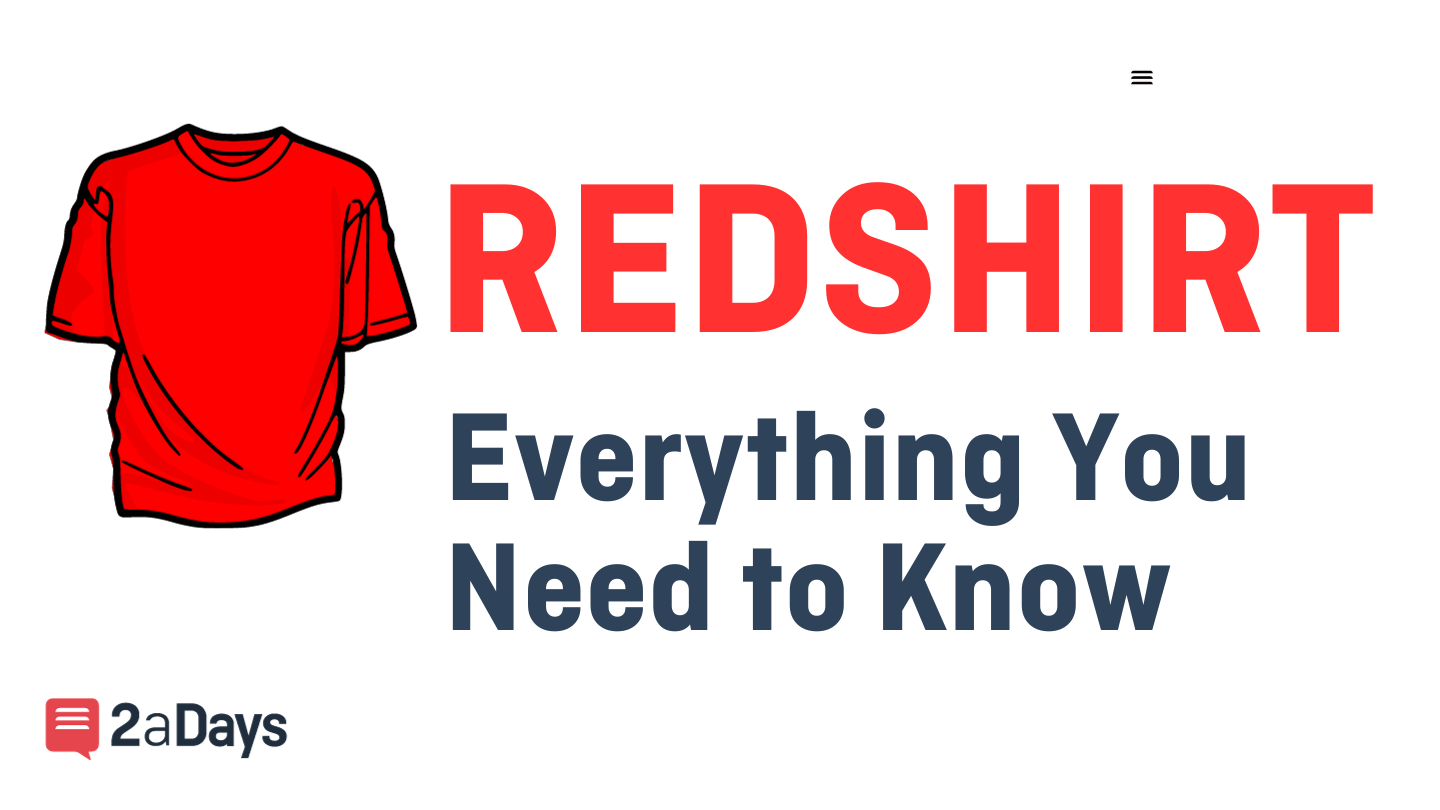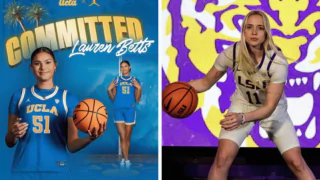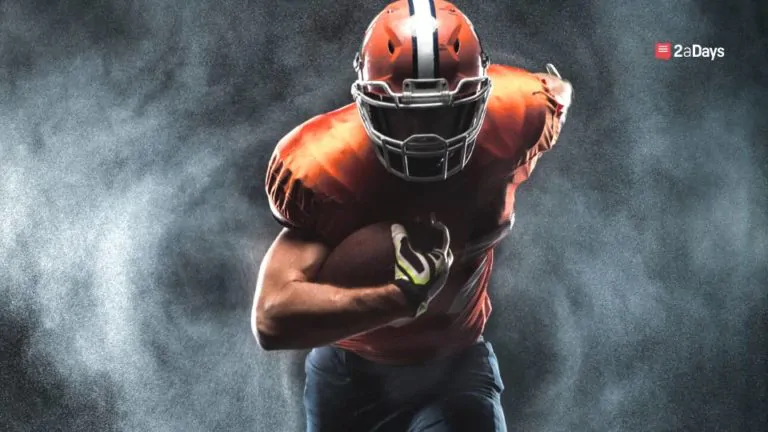Redshirting can have different meanings and utility depending on your situation. As a collegiate coach, you can use redshirting to help with roster construction, depth, development of fundamentals, or to save a year of eligibility for an injured player. However, the focus of this piece is for the athlete: what is redshirting, how common is it, and how you can use it.
Related: All Redshirt Articles
What is Redshirting?
As you look forward to joining the collegiate ranks of student-athletes, you have so many options regarding how you might spend the next period of your life. Redshirting, at its core, allows student-athletes to maintain athletic eligibility while still reaping the benefits of a scholarship. You can practice with your team, condition with your team, and get ahead in the classroom. Redshirting can grant advantages like having a year to mature, to get comfortable with campus life, and to allow an athlete to pursue academic opportunities like a Master's or another graduate degree while still on scholarship. Acclimating to college life is no small task, and not traveling with the team might allow a student-athlete to up their GPA with core classes, or take the most difficult required classes to avoid them when with the team full-time.
Related: Everything You Need to Know About 3 Different Types of Redshirting
However, redshirting is not all rose-colored glasses. Redshirting is asking an excited athlete to delay the gratification that comes with playing college sports. People cheering you on is a feeling like no other. A student-athlete may take a redshirt but then might feel like a team member. In some cases, they might feel ostracized by their teammates. Minnesota Women's Hockey team captain Kelly Pannek stated, “You're going to go through it, you're going to get through it. Lean on the people around you; your teammates, your staff, your trainers, whoever it is.” The most important thing to remember is that any redshirt decision should be yours. Seek advice from those you trust, from career consultants at the university, and your coaches to make a decision that is best for you.
Redshirting allows a student-athlete five years to use four years of athletic eligibility. There are a few different ways to achieve this, and though military and religious redshirts have happened, they are not as common as voluntary, medical, and academic redshirting, which will be discussed below.
Related: How Many Times Can You Redshirt?
“Mentally, it's very tough. You do go from being ‘the guy' to, frankly, riding the bench every single game.”
– Ross Cockrell, Duke, Football
Voluntary Redshirting
Coaches can use redshirting to take advantage of the athlete, as some coaches may break promises made during recruitment.
Morgan Hollenback, a former Syracuse LAX player, stated, “My recruitment versus actual experience with Syracuse Lacrosse could not have been more different. I was told there was a place for me on a top-flight roster, yet as soon as I stepped onto Syracuse's campus, my coaches asked me to voluntarily redshirt.”
Her place was on the bench, along with half of the incoming freshman class (6 of 12). Once the season started in the spring, a fifth-year senior advised a freshman, who was not a redshirt, to not to be friends with the redshirts because “it's a waste of time and they will never play.” There was a distinct lack of communication about what redshirting would mean for the six freshmen, and by the start of senior year, four out of the six redshirts were no longer playing lacrosse at Syracuse.
Although Morgan's case went poorly, voluntary redshirting can work for the team, the coach, and the athlete. The key is to have clear communication from the coaching staff and self-awareness of the athletes to know what they want for themselves.
Related: Pros and Cons of Redshirting
Medical Redshirting
Obviously, athletes do not want to obtain a medical redshirt at the beginning of their college sports career. However, when playing sports at this level, injuries can and do happen. A medical redshirt can save a year of eligibility that you might have lost due to an injury.
In 2018 there was an NCAA medical redshirt rule change. According to the Senior Associate Athletic Director for Compliance, Scott Young, “the NCAA has two requirements for a medical redshirt; the injury must have occurred in the first half of the season, and the athlete must have competed in less than 30 percent of the season. You must provide documentation of the injury, and it must be considered season-ending.”
The hope is that this new rule change will decrease the frequency of season-ending injuries. Wear and tear can cause injuries to happen, and when they do happen, they are often severe. Allowing younger athletes to play in a few games over the course of a season can help the seasoned players keep their bodies fresh. Due to the recency of this rule change, it is too soon to tell if there is any evidence to back up this reasoning. However, with the rise in public concern over concussions, I think it was the right move to make for the NCAA.
Related: How Does the NCAA Medical Redshirt Work?
Academic Redshirting
The rate of student-athlete graduation has increased by 15% since 2002. In hopes of achieving an even brighter academic future for its student-athletes, the NCAA created the academic redshirt, which can happen when a player meets a university's academic standards but is not up to the NCAA-required cumulative GPA of 2.3.
The academic redshirt is determined by the athlete's high school transcripts. As long as they maintain a 2.0 GPA, they can qualify for and receive an athletic scholarship, but if below 2.3, the student-athlete will be on an academic redshirt. You will be allowed to practice with your team, but you are not allowed to compete, official, or exhibition for the academic year. This is where I implore you to use the help of tutors, professors and advisors. They are in place for your benefit as a student-athlete and can help tremendously. Once the year has passed, hopefully, your GPA will increase. Here is a sliding scale to calculate the GPA, SAT, and ACT requirements of eligibility.
A circumstance to note is if an athlete should require an academic redshirt, return to the team, and then sustain a season-ending injury, the athlete may use a second redshirt. The athlete, despite two years of academic progress, will not lose any athletic eligibility.
Related: Redshirts, Grayshirts, Greenshirts, and Blueshirts
Situations in Redshirting
In the instance of a voluntary redshirt going poorly, transferring schools may present better opportunities for you as a student-athlete. There have been a few high-profile transfer stories in college football in the past decade, notably one at North Carolina State University (NC State). Russell Wilson redshirted at NC, gained a starting job, was drafted to play baseball, lost his starting job (and scholarship), and transferred without using a year of eligibility. He was able to do this using NCAA bylaws regarding graduate transfers, but he would have lost a year of eligibility for transferring had he not taken the redshirt year at NC State to make academic progress.
The new redshirt rule, enacted in 2018, allows a student-athlete to participate in some games without losing eligibility for the whole season. The athlete can benefit by keeping your eligibility without feeling the performance gap from your teammates. Yet, there are still cases where it would seem to make sense for a player or team to mutually agree on a redshirt, but it doesn't happen. Three high-profile quarterbacks in recent years have had intriguing situations revolving around redshirts: Justin Fields (UGA), Jalen Hurts (Bama), and Tate Martell (Ohio St).
Justin Fields – Georgia Bulldogs to Ohio State Buckeyes
Justin Fields was a high-level recruit and lost a battle to the incumbent starter. Then, rather than appear in four games and maintain redshirt eligibility, he was used sparingly in almost every game, never throwing more than ten passes or rushing ten times. He lost a year of eligibility, and after the season ended, he announced his intention to transfer to Ohio State for 2019. Justin will be eligible to play in 2019 due to the granting of a hardship waiver.
Tate Martel – Ohio State Buckeyes to Miami Hurricanes
Tate Martell chose to redshirt his freshman year in 2017. During the 2018 season, Zach Smith and Urban Meyer scandal took place, and at the close of the season, Urban Meyer stepped down. Due to the combination of a new coach and the incoming transfer of Justin Fields, Tate transferred to the University of Miami (FL) and was granted a hardship waiver.
Jalen Hurts – Alabama Crimson Tide to Oklahoma Sooners
Jalen Hurts was wildly successful in his freshman and sophomore season, but playing poorly in the first half of the National Championship game gave his backup the starting position. He could have sat out his Junior season and maintained eligibility for another year. Instead, Jalen played as the backup in blowout games, and graduated in December of 2018. Now, a graduate without a starting job, Jalen could transfer anywhere he liked and ended up choosing Oklahoma, where he will be able to pursue a graduate degree.
Dean Farris – Harvard University to University of Texas
An interesting situation is that of Dean Farris. A swimmer for Harvard University, Farris will be foregoing the 2019-2020 swimming season to train for the Tokyo Olympics. His coach, Kevin Tyrrell, brought Dean the idea after a standout performance at the NCAA Championships, and Dean agreed. Farris will be training at the University of Texas under Eddie Reese, Olympic swimming coach. Reese has coached, or assistant coached the US Swimming Team since 1992. The decision to redshirt allows Farris to “enjoy senior year and not be stressed about graduating and trying to swim at the same time.”
Quotes from Athletes about Redshirting
“Mentally, it's very tough. You do go from being ‘the guy' to, frankly, riding the bench every single game.”
Ross Cockrell, Duke, Football
“You're going to be a lot better in your fifth year than you are your first year.”
Mike Glennon, NC State, Football
“I went in hungry as ever. But to be honest, the weight training shocked me a little… I gained 20 pounds in 3 months. I ended up redshirting.”
Julian McWilliams, Ohio University, Baseball
“It was best for me, and I had to learn the playbook too, so it was good for me to get a year for me under my belt, learn everything about the game and Coach (Nick) Saban's defense and everything and get ready to make a run at [spring scrimmage] A-Day.”
Ben Davis, Alabama football
There are so many situations where redshirting can apply to you, the student-athlete. Every situation is unique, and it is up to you to determine what your needs are. Make a pros and cons list, educate yourself, and then talk to athletes who have redshirted. You will need to hear athletes' stories because coaches may not present the full story to you during the recruitment process.
Good luck guys, research is key!
Have an idea for a story or a question you need answered? Want to set up an interview with us? Email us at [email protected]
* Originally published on August 5, 2021, by Thomas Walker







